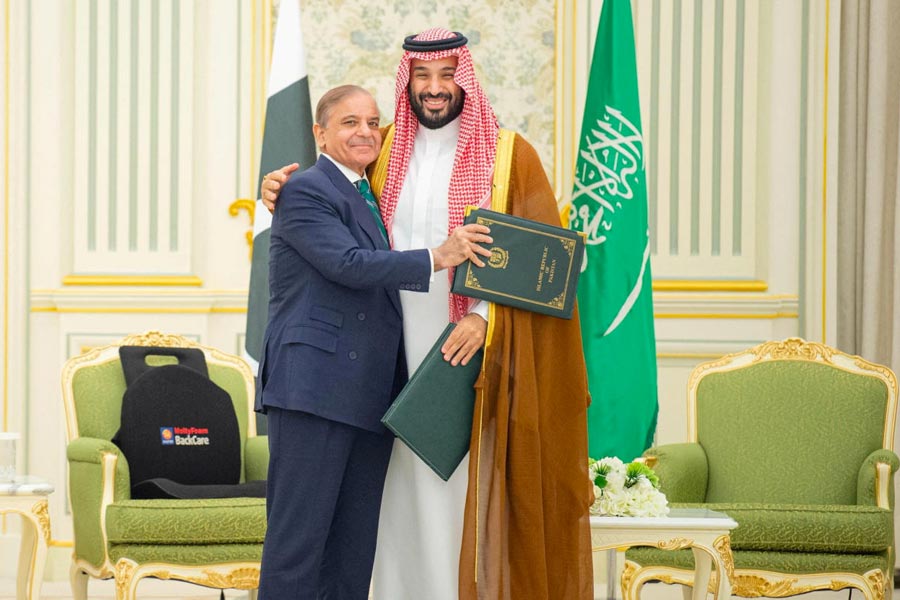 |
 |
| Elephant & giraffes at the Alipore Zoo |
From Aquatica to the recently launched Clown Town, the city now boasts the A to Z in amusement parks. But it is the zoo that remains the last word and the first choice when it comes to having a day out with family.
According to footfall figures for this winter, Alipore zoo is still the number one attraction for the people of Calcutta. And that too, by four lakh and more.
Alipore Zoological garden director Subir Choudhury says: “We had about 19.25 lakh visitors over the last 12 months.” Nicco Park vice-president, marketing, Melvyn Pinto puts ticket sales at about 15 lakh in the same period. As far as the zoo goes, the 2002 figure is a jump of a cool lakh over that in 2001, when it had “around 18.25 visitors”.
What is the key to the rising popularity for the 127-year-old landmark? “We draw visitors not only from the city but from all conceivable parts of the state. As a matter of fact, we are the only ‘large zoo’ in the state, as specified by the Central Zoo Authority (CZA). The zoo’s attraction will always be there. Where else can you see so many animals, many of them in their natural environment?” asks Choudhury.
| Football facts |
| Mammals 375 Birds 1,350 Reptiles 85 Founded in: 1875 Area: 45 acres Visitors at other funspots last year (approx): Nehru Museum 86,000 Victoria Memorial 10 lakh Planetarium 810 lakh Aquatica 5 lakh Nicco Park 15 lakh Swabhumi 3.5 lakh Clown Town 20,000 in the past two months |
The secret behind the growing success, says the zoo director, might be the increase in the number of open-air enclosures during this time. “Even the rise in ticket prices (from Rs 5 to Rs 10) was not a deterrent,” he added.
Sanjay Maheshwari, director of Clown Town, the youngest amusement centre of the city which boasts a state-of-art go-karting track and the city’s only ice skating rink, agrees with the zoo director’s contention. “We can’t compete with them. The attraction of live animals is immense to people of all sections and age-groups, especially kids. I think the newly-opened modern amusement centres actually eat into the popularity pie of the museum and Victoria Memorial,” he points out.
The footfall also follows a specific pattern. According to zoo sources, almost half of the annual visitors come to the zoo in December and January. “In the past two months, we have had more than 11.5 lakh visitors,” says Choudhury. The peak is reached on holidays — December 25 and January 1 — with gate figures often touching 50,000. This year, the spate of rallies organised by various political parties acted as a bonus, boosting ticket sales further with people from the suburbs preferring entertainment of a different kind. Buoyed by the success, the authorities at Alipore are planning to build an open-air enclosure for Asiatic lions. Finances, at least in part, have already been cleared by the CZA . — Jayanta Basu
Good news for lovers of French literature. In a market starved of the latest titles from the land of le tour d’eiffel, a collaboration between the Embassy of France in India and Rupa & Co promises to fill in the blank. A new collection, christened Rupa France, has been launched to make modern French works available in the Indian market.
The first book of the series, Anti-Memoirs by Andre Malraux, France’s leading anti-Fascist writer of the 1930s, was launched by cultural attaché to India Jerome Neutres at the Alliance Francaise de Calcutta stall at the Book Fair. “We started with Malraux as 2003 marks his centenary and is being celebrated as the Malraux Year in India. There are plans to bring out four books every year, with Daniel Pennac, Louis-Ferdinand Céline and Didier Daeninckx already lined up for release,” informs Myriam Rasiwala of the embassy. Adds R.K. Mehra of Rupa: “Our association with French authors started with the Model Anthology of French Poetry published last year. The aim of this new series is to reach to readers all the books that have been out of print or are available in prohibitively priced international editions.” The effort is being aided by the Tagore programme of translation that the French government has undertaken, which assists both French and Indian publishers and translators.
With World Cup fever running high, almost every corporate label is keen to cash in. The latest to join the Cup chorus is Virgin Music, which has released a special song, Humko To Hai Poora Yakien, to buoy the spirits of Sourav Ganguly and gang in South Africa.
Produced by MSN India with Virgin Records India, Humko To Hai Poora Yakien is a rendition by some of the biggest names in the Indian music industry, “showcasing the entertainment world’s dedication to the world of cricket and the heroes of the nation”. The song, with its video made by Mahesh Manjrekar, was launched this week.
Through Humko…, Virgin has brought together singers like Shubha Mudgal, Shankar Mahadevan, Shaan, Sudesh Bhosle, Sunidhi Chauhan, KK, Sagarika, Shweta Shetty, Shweta Pandit and Shraddha Pandit.
Shameer Tandon, marketing controller, Virgin Records India and also the composer of Humko…, said: “Virgin Records and MSN co-produced and conceived this song in March last year. We decided to bring under one umbrella some of the most talented singers in the country and dedicate it to every Indian who has done the nation proud.” The lyrics are by Ajay Jhingran.
The music video brings together Sunil Shetty, Sanjay Dutt, Salman Khan, Raveena Tandon, Mahima Chaudhry, Bipasha Basu, Diya Mirza, Mahesh Bhupathi, Mohinder Amarnath, Sudesh Bhosle, KK, Arbaaz Khan, Sohail Khan, Salim Khan, John Abraham, Ritesh Deshmukh, Divya Dutta and Sagarika.
Virgin Records has also produced a techno version for the song to suit discotheques and parties.
 |
| Fossils belts it out at MusicMela 2003. Picture by Aranya Sen |
It’s the season of fairs, and even as big brother Book Fair hogs the limelight, there’s something special on for Calcutta’s music connoisseurs as well. MusicWorld’s MusicMela 2003 on the premises of Academy of Fine Arts, offers a spread of 6,000 titles, including some rare Bengali repertoire, with discounts of 15 per cent upwards.
Inaugurated by Usha Uthup on January 29, the mela is on till February 9. “A large number of people from far-flung areas visit the Maidan during this time of the year. The Mela is an attempt to bring a slice of MusicWorld to them,” says the music store chain’s regional manager Dipra Jha. As added attraction at the mela, Bangla bands are making music on the lawns every evening.
Contemporary art of Bengal is not very well represented either in the West or north India where many people are still of the impression that the Bengal school has a stranglehold of the art of this region, says Ashit Paul, chief convenor of Mukta Shilpa. He is organising a three-day art workshop at the Academy of Fine Arts from February 10.
The focus will be mainly on installations but artists will be given a free hand. They can work the way they want and they can use whatever material they choose. Apart from the freedom of choice, there will be no theme that the artists will be expected to work around.
The participants will be 32 artists both young and old, and for inspiration they can take their pick of the verse of 32 poets. It will be for them to choose a particular word or line that will be their starting point. Translations of the Bengali poems will be available in English.
Among the artists and sculptors are Manik Talukdar, Janak Jhankar Narjery, Adhip Datta, Atin Basak and Sunil Das. Among the poets are Sunil Gangopadhyay, Amitabha Dasgupta, Namita Chowdhury and Mandakranta Sen. There will be poets from Bangladesh, too, such as Al Mahmud. “They will be expected to work with a fresh mind and break out of the traditional mould,” says Paul.
Artists will also be encouraged to paint on clothes, telephone sets, umbrellas and doors and windows. Things of everyday use will turn into works of art. Mukta Shilpa intends to show the works in Mumbai, Delhi and perhaps Bangladesh. This is the first time that such a workshop will be held at the Academy. This is in keeping with the Academy’s new policy of reviving the cultural activity and ambience for which it used to be famous once.











